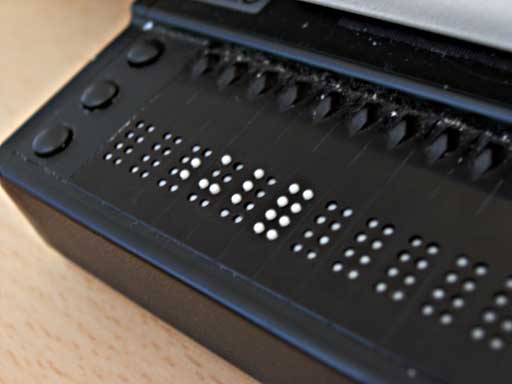If you can read this, help someone else to read it too.
You’ve seen it in the Tears of a Machine kickstarter project write-up and in the stretch goals, but I’m going to say a little more about the subject of an accessible game manual.
For 13 years I’ve worked at Learning Ally, a non-profit organization that serves students with print disabilities. I’ve gone through dyslexia simulation exercises and teaching sessions about the way that the brain develops to handle written language, all so that I could better understand the challenges that a student with learning differences must face. The simplest way for me to explain it is to imagine that you’re learning algebra but your book is written in a foreign language. You can understand the concepts and the symbols but have to puzzle them out from among the surrounding words, slowly. Bit by bit.
Now, go to your bookshelf or the folder of PDFs on your computer and open up an RPG manual (preferably one of those big 200+ page ones that cost you 50 bucks) and drink in the wall of text. That’s what it is for many people. A wall. Mild dyslexia is almost commonplace; as many as 1 in 5 students could benefit from having access to their school books in alternative formats. There are imaginative and intelligent people who are held back by how information is delivered and by the stigma of “disability.” With the same information presented in a different format they are just as quick to learn as many others. I want to give them the opportunity to enjoy my game without barriers.
How will I make Tears of a Machine accessible? The DAISY Consortium is an international organization devoted to the same goals of Learning Ally, to remove the barriers of print comprehension from information. They provide an assortment of free and open source tools for the creation of accessible books and audio. Because I have access to the raw text I can use many of these tools to convert it into these formats:
Phase 1 is a version of the book for screen reader software and refreshable braille. This means formatting the files so that text-to-speech software can read the text aloud through synthetic voices or using one of these neat gizmos that pops up the braille characters line by line.
I want it to be easy to find things in the books and to navigate from place to place so I’ll have to make some modifications to the original book, including replacing some images with written descriptions for blind readers. I’ll also convert the text and it’s accompanying materials to use fonts specially designed to ease reading for those with dyslexia.
Phase 2 is an audiobook version with human voice. I’ll narrate the book and provide the audio files so that a dyslexic or blind reader can listen-along while reading their copy of the book. Most people prefer the human voice over synthetic speech and I’ll be able to ensure any odd words like Mayzor are pronounced as I intend them.
Phase 3 is an integration of the two. Creating an audiobook that synchronizes to a display of the text. Fast forward the audio and the screen scrolls to catch up. Skip down to the next paragraph on the page, and the audio jumps to the same words.
I know there’s an audience out there for accessible textbooks. I don’t want them to lose the opportunity to enjoy my favorite hobby because it’s locked up in reams of text. I’d love to see other publishers do the same and let a hobby that is all about creativity reach everyone with an imaginative and willing mind.

Comments